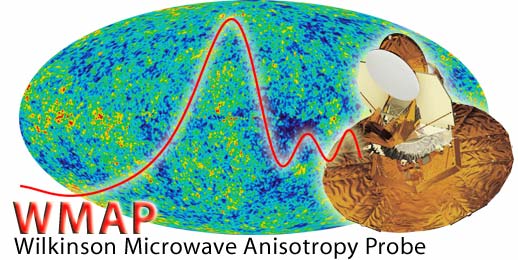

Wilkinson Microwave Anisotropy Probe DR5
The WMAP (Wilkinson Microwave Anisotropy Probe) mission is designed to determine the geometry, content, and evolution of the universe via a 13 arcminute FWHM resolution full sky map of the temperature anisotropy of the cosmic microwave background radiation. The choice of orbit, sky-scanning strategy and instrument/spacecraft design were driven by the goals of uncorrelated pixel noise, minimal systematic errors, multifrequency observations, and accurate calibration. The skymap data products derived from the WMAP observations have 45 times the sensitivity and 33 times the angular resolution of the COBE DMR mission. The WMAP skymaps and associated inverse covariance matrices follow the CMB polarization convention. The WMAP mission characteristics are summarized in the table below. In the first release of WMAP data (February 2003), only the temperature data and analyses from the first year of operations at L2 were provided. Much more information and data was provided in the second release (March 2006); the differences between the two are characterized by:
The third data release took place in March 2008. It was characterized by:
The fourth release of data took place in January 2010. It is characterized by:
The fifth and final release of data took place in June 2012. It is characterized by:
| ||||||||||||||||||||||||||||||||||||||||||||||||||||||||||||||||||||||||||||||||||||||||||||||||||||||||||||||||||||||||||||||||||


